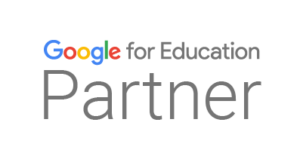Education sector has rapidly embraced digital transformation over the past few years. From online classes and cloud-based data storage to smart classroom tools and learning management systems, schools are becoming increasingly reliant on technology. However, this digital progress also opens the door to rising cyber threats and schools become prone to various types of cyberattacks.
Educational institutions are now facing thousands of cyberattacks every week. Most schools still lack dedicated cybersecurity infrastructure or awareness, which leaves their students, staff, and systems vulnerable to serious risks.
Understanding the most common types of cyberattacks is the first step toward building strong defenses. Here are five types of cyberattacks schools must actively watch out for.
1. Phishing Attacks-
When deception enters your inbox
Phishing is one of the most common and dangerous cyber threats targeting schools today. In this type of attack, hackers send deceptive emails that appear to be from trusted sources like school administrators, government departments, or vendors. These emails often include urgent messages prompting recipients to click a link, download an attachment, or share sensitive information.
For instance, a staff member might receive an email asking them to verify their school login credentials or payment details for a vendor. Once they comply, hackers gain unauthorized access to systems, which can result in data theft, financial loss, or widespread disruption.
How to prevent it –
Train your staff and students to spot suspicious emails. Never click on unknown links or attachments. Always verify requests for sensitive information by phone or in person before taking action.
2. Ransomware
Holding your school’s data hostage
Ransomware is a type of malware that locks access to a school’s data or system until a ransom is paid. Attackers usually encrypt critical files and demand payment in cryptocurrency in exchange for the decryption key. In the past few years, ransomware attacks on educational institutions have spiked globally and are now targeting Indian schools as well.
Imagine waking up to find that all your student records, fee databases, and classroom lesson plans are inaccessible. That is the nightmare ransomware can bring. Paying the ransom does not guarantee data recovery and may actually encourage future attacks.
How to prevent it –
Keep regular backups of all school data and store them offline. Update your systems and antivirus software regularly. Limit access to critical files and monitor for unusual activity on your network.
3. Malware
The silent infiltrator
Malware is a broad category that includes viruses, spyware, trojans, and worms. These malicious programs are often hidden inside seemingly harmless downloads, such as free software, games, or attachments sent over email or messaging platforms. Once installed, malware can damage devices, steal data, monitor user activity, or open a backdoor for further attacks.
In school environments where multiple devices are used and shared across students and staff, malware can spread quickly and affect entire networks.
How to prevent it –
Install robust antivirus and anti-malware solutions on all school devices. Restrict the installation of unauthorized software. Educate students and staff about the risks of downloading content from unknown sources.
4. DDoS Attacks
Overloading the system
A Distributed Denial of Service (DDoS) attack overwhelms a school’s servers or networks with a flood of traffic, causing systems to slow down or crash completely. These attacks are particularly harmful during exam seasons, online classes, or virtual events when uptime is crucial.
Attackers may use botnets or infected computers to send thousands of simultaneous requests to a school’s website or platform, effectively making it unusable. In some cases, DDoS attacks are a distraction tactic to mask more serious breaches happening in the background.
How to prevent it –
Partner with your IT team or service provider to set up firewalls, intrusion prevention systems, and traffic filtering. Monitor network activity and act swiftly if unusual spikes are detected.
5. Insider Threats
Breaches from within
Not all threats come from outside. Sometimes the risk lies within the school walls. Insider threats involve current or former employees, contractors, or students who misuse their access to school systems for malicious intent or personal gain. This could include stealing data, leaking confidential information, or intentionally damaging systems.
These threats are difficult to detect because they come from people who already have access to your systems and data. Whether intentional or accidental, insider threats can cause long-lasting harm.
How to prevent it –
Implement role-based access controls so users only access what they need. Monitor user activity for signs of misuse. Ensure exit protocols are followed when an employee or student leaves the institution.
Schools are no longer just centers of learning. They are now digital hubs that store sensitive data, operate cloud systems, and rely heavily on online tools. With this evolution comes the responsibility of protecting school communities from cyber threats.
The types of cyberattacks discussed here are just the tip of the iceberg, but they represent the most frequent and damaging ones targeting schools today. Whether you are a principal, administrator, or IT decision-maker, staying informed and taking proactive steps toward cybersecurity is essential.
It’s not about investing in expensive technology overnight. Start with awareness, training, and regular data backups. Partner with cybersecurity experts and build a culture of digital safety. Because in education, the cost of negligence is much higher than the cost of prevention.




 1st Floor, H-31, Sector 63,
1st Floor, H-31, Sector 63,